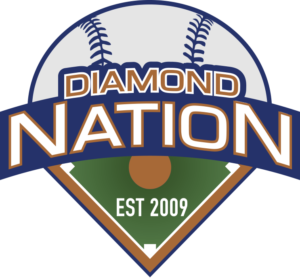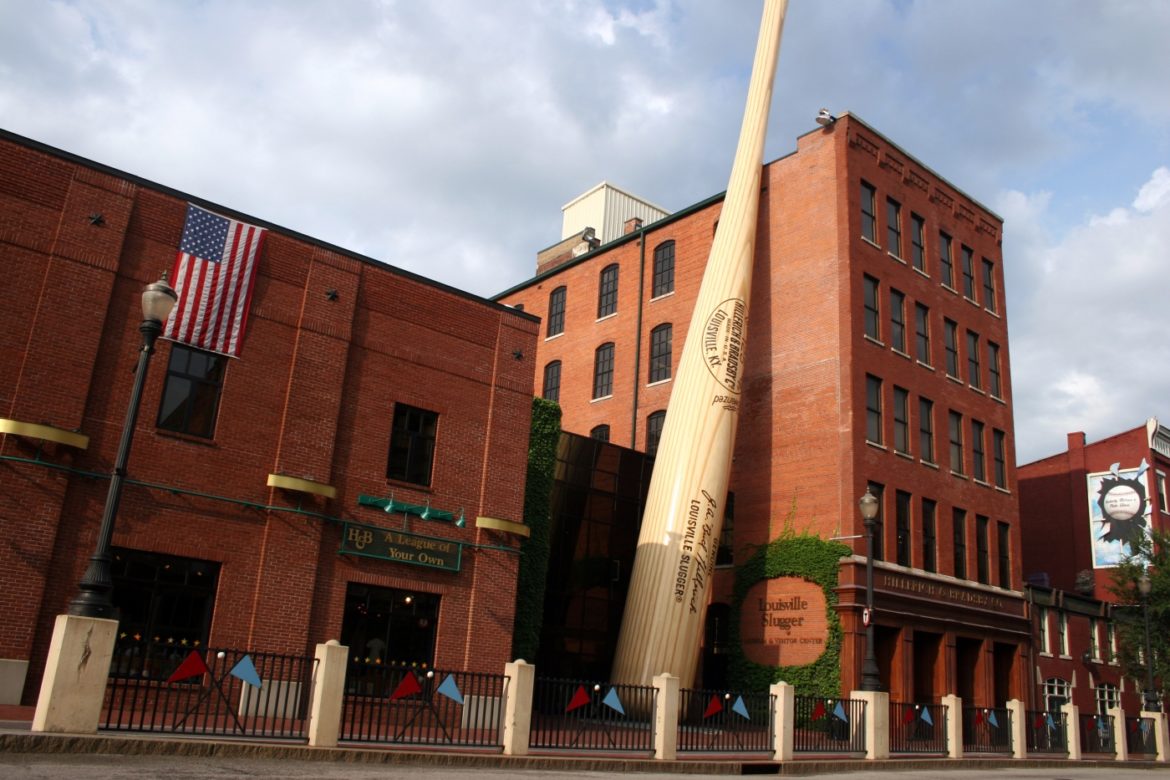The Story of Baseball as told through Bobbleheads, Cracker Jacks, Jockstraps, Eye Black and 375 Other Strange and Unforgettable Objects
Baseball has a rich history that becomes much deeper and more fascinating when viewed from the front seat of the time machine driven by longtime sports journalist Steve Rushin.
Rushin’s enthralling historical journey employs the game’s tools, trinkets and characters to write a unique narrative on the national pastime. It truly is a love letter to the game as the author unearths forgotten tales of how and why the game came to be what it is today.
No sport embraces its wild history quite like baseball especially in memorabilia and objects. Rushin seems to drag stories of out cold basements and dusty attics. None bigger, physically, than the 34-ton bat that leans against the Louisville Slugger factory (photo above) in Louisville, Kentucky.
He offers amusing tales of players trying to catch balls dropped from great heights, as well as the story of Spalding and the slow move by clubs to let fans keep balls hit into the stands. Rushin then moves on to the story of bats, with Louisville Sluggers, the transition to metal and the threat of the ash-borer all figuring prominently.
Rushin describes early spring training sites and then embarks on an enthusiastic history of the glove, noting that a 1938 X-ray of Lou Gehrig’s glove hand showed 17 breaks. Next come the uniforms and the slow evolution away from flannel (in which players baked and itched for decades) to double-knit pieces.

He also relates the history of the baseball cap, noting how its design has spread around the world. He pauses to chat about eye black, the development of headgear for hitters, cups to protect the family jewels and sufficient urinal space in the ballpark (a necessity, he notes, due to the torrents of beer consumed). Rushin’s mind does go comfortably to places most tread carefully.
Rushin’s grandfather, Jimmy Boyle, played in the 1926 World Series for the New York Giants, working his trade for the princely sum of $250 a month, minus the $30 security deposit for the two uniforms he was issued. The specter of Boyle proved to be an important influence on Rushin, though the man died eight years before he was born.
A lot of joy in Rushin’s exhaustively researched, very readable history comes from learning about the people behind the game’s innovations. The Dodgers’ advertising VP Danny Goodman made popular souvenirs such as the bobblehead doll. Goodman, and soon the rest of baseball’s hierarchy, came to see the stadium crowd as a captive audience, willing to buy anything, from underpants to aprons.
Foolproof Taylor spent years unsuccessfully promoting his protective cups and helmets. Taylor had what he believed was a “foolproof” sales technique. Skeptics would kick Taylor, who thankfully was wearing his fortified handiwork, in the groin or smash him in the head with a bat. Taylor never struck gold but certainly made an impact in the game.
Tales such as these were there to be unearthed all along and, thankfully, Rushin was willing to do the necessary digging.
Baseball merchandise, which has long been an important part of the game, was until recently generally dismissed by players and sportswriters alike. Players once scoffed at sunglasses and baseball gloves, both of which would prove indispensible tools and not, as initially deemed, a sign of a player’s weakness.
Perhaps Chicago Sun-Times columnist Rick Telander says it best:
“Do not drink liquids as you read this book, because you will spew them in hilarity. I kid you not. This is a dangerously funny book, made brilliant by the fact it is also the genuine history of baseball, true as ash. Above all, it is Steve Rushin’s love letter to the Great American Game, perfumed with the odor of hot dogs (the ones he cooked as a kid employee at the ‘Met’ in Minneapolis), glove oil, Frosty Malts, and exotic things like splattered grapefruits dropped from the Washington Monument.
“This is Rushin throwing from the outfield to the plate, at his wordsmith best. I’m serious about the laughter. My stomach feels like it’s been hit by that 68,000-pound bat.”
Whether you are a coach or a player or a mom or a dad who loves the game, The 34-Ton Bat provides the type of insight you didn’t know you needed but absolutely must have. The book can be purchased on Amazon.

